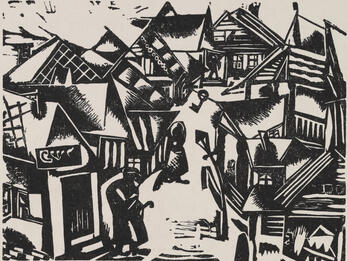The Fire Came and Burnt the Stick
El Lissitzky
1919
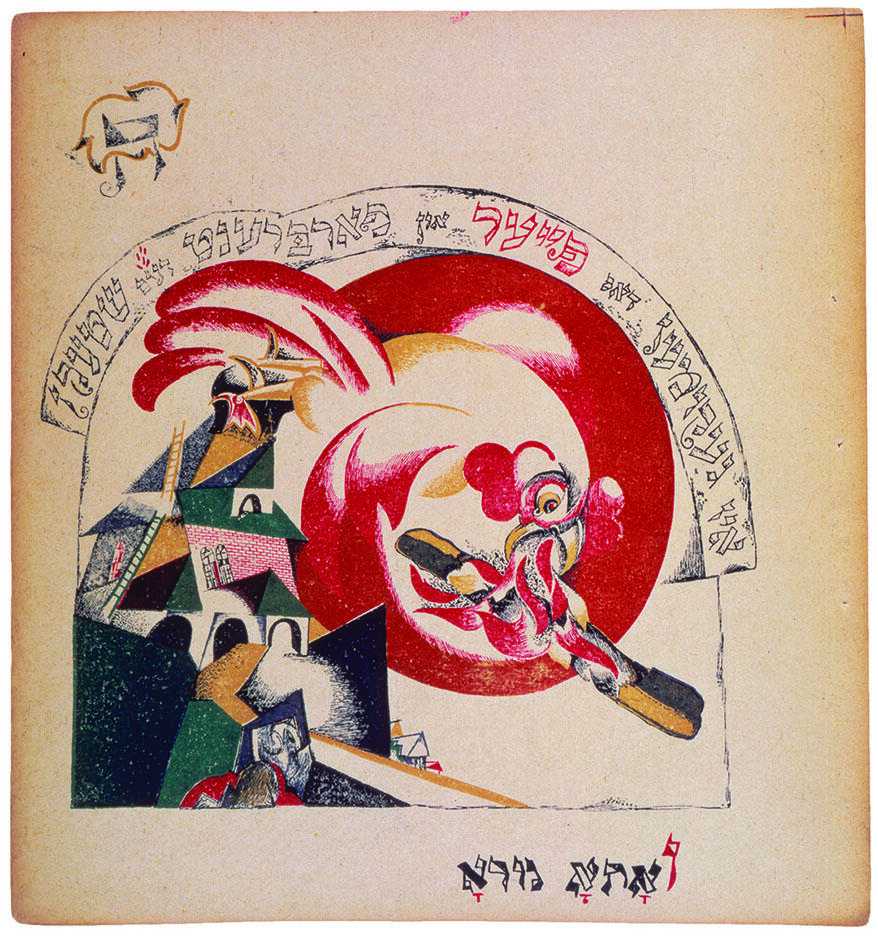
The Seder song “Had Gadya” tells the tale of a series of assailants who consume one another until the Angel of Death is destroyed by God. This image is one in a series drawn for this song. The Yiddish text at the top of the image can be translated as “The fire came and burnt the stick” and indicates the specific stanza that this image illustrates. Images like this one demonstrate the ongoing tensions between tradition and modernity, and between Jewish and Soviet identities, that shaped early twentieth-century Jewish life and culture. Scholars offer a variety of ways to contextualize these images relating to the political and cultural upheavals in the years following the Russian Revolution.
Do you see any visual clues that might link this image to the transformative events of the 1917 Russian Revolution?
What parallels might Lissitzky have been suggesting between the redemption of the Passover story (and the victory of God over the Angel of Death in "Had Gadya") and the victory of the Bolsheviks?
What messages about Jewishness and Sovietness might this image have presented to Russian Jews in the first few decades of the twentieth century?
Creator Bio
El Lissitzky
You may also like
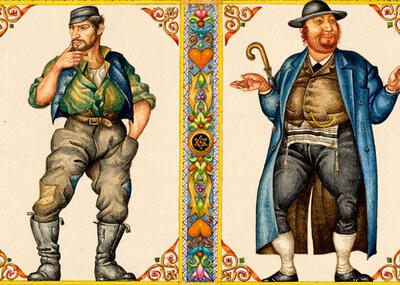
Passover across Jewish Time and Space
Passover is the most celebrated holiday for American Jews. Yet, few appreciate the historical evolution and diversity of its key themes and messages.
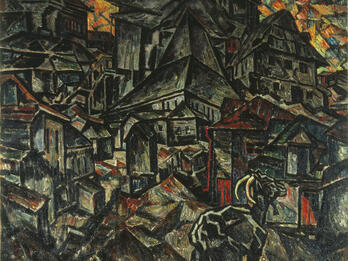
Destruction of the Ghetto
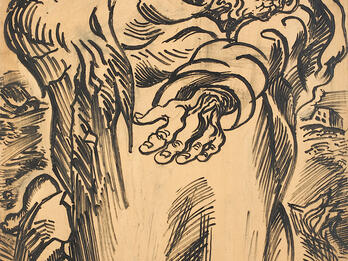
The Prophet
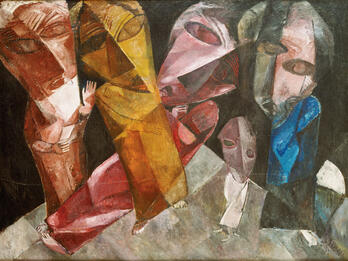
Eternal Wanderers
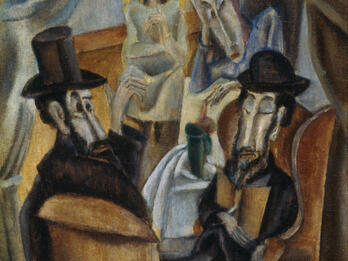
Sabbath
